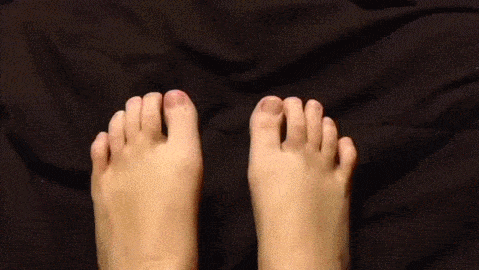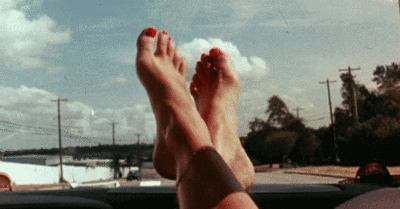Olympic Weightlifting Technique | How to use your feet
FREE WEIGHTLIFTING WORKOUT!
Download by entering below

Olympic Weightlifting Technique | How To Use Your Feet
When using the feet in Olympic weightlifting there are a couple of different things we have to talk about. We have to talk about how we set our foot width position for the pull, how we set our feet in the catch position, how we get our feet from the pull position to the catch position, and what type of pressure we need to be applying into the floor. There are a lot of different points of discussion for us to cover.
One of my most successful weightlifters, Hayley Reichardt, used to struggle with how she moved her feet in the snatch. She would jump her feet all over the place. The weight might crash on her or she would miss it forward. Either way, she would crumble up into a pile on the platform and cry giant tears of sorrow. Not actually, and all comedic teasing aside, Hayley did struggle with her feet weightlifting.

Here are a few things we did to help Hayley develop into the technical monster on the platform she is today.
Setting The Feet
Start with the foundation. The first thing we need to do when addressing the feet in Olympic weightlifting is literally just put the feet together to form a ninety-degree angle. Basically, put the heel of one foot into the instep of the other foot and establish the distance between each foot in the stance. Just like that, we will be standing one-foot width apart. Or if you prefer, shoulder-width apart or tell an athlete to jump on a box, and when they go to jump, that take-off position is typically where their pulling position should be.
It is easy to set the foot-width. The problem is we have coaches who will spend the entire first session just setting the foot width. Not necessary!

Now, getting a little bit more advanced, addressing the clean more specifically, we want to have the elbows right outside the knees in position with the feet. If the feet are really wide, it will create an elbow bend. We want to keep the elbows nice and long when setting the foot-width position. This is a little bit more complicated but still doesn’t take that much time.
Setting the foot-width for pulling is the same in the snatch, clean, and, I believe, in the jerk.
Catch Position
We want to think of the catch position as to where the feet should be in receiving a snatch, a clean, or a power clean. Typically the easiest thing that can be done is to have an athlete do a front squat. Athletes will typically move their feet wider. It is that easy oftentimes. This can be done with middle-school-age kids without much issue if they have the front rack mobility. Make sure to pay attention to the feet. Sometimes the feet may be angled out somewhat extremely and that needs to be corrected.
Going further into the catching position, some athletes, not all, will even land off of a box or hurdle hop wider than what they jumped. This is another way to define the foot position when setting up for the catch.
I typically recommend using a more narrow stance in the back squat and going slightly wider in a front squat. I like to think of the foot position in the back squat as directly correlating to the pull in the snatch and the clean and the dip. I like to think of the front squat is slightly wider to be the catch position in the snatch, clean, and where the feet go in the catch of the power jerk.
Understanding Mechanics
When people widen their foot stance, they become shorter. The narrower the stance is, the taller the person is. The whole point is that a stance that is shoulder-width apart with the feet an athlete can pull longer. Then as the athlete goes out into the catch position, they are able to get lower because their hip height has lowered just from moving the feet out.
That’s the first lesson of understanding mechanics.

The second lesson of understanding mechanics has to do with how the feet move. The feet do not jump all over the place and out. The feet slide out. Think about it. If an athlete can apply force into an object over a long period of time, they can have a longer path of acceleration. So if the feet can apply force into the floor longer so the athlete can get taller they will have a longer path to accelerate the weight on the bar.
Now if the feet jump out, it will take longer to absorb that energy. If the athlete slides the feet, their hips lower quicker and they are then able to apply energy back into the bar at a quicker pace. This also makes for a quicker transition period.
The shortened transition period lessens the likelihood of the bar crashing or losing the bar forward. And yes, some world-class athletes jump their feet and are very successful. But coaches dealing with new athletes, ingrain that sliding position early on because it will carry over to more technically sound movement for the long haul.
Foot Pressure
“Heels! Heels! Heels!” isn’t a bad cue. I believe that when athletes are applying pressure through the foot, there should be pressure on the heel and right at the ball of the foot and at the toes as well. There is a three-way pressure point. Sometimes athletes dipping in the jerk will raise their toes. I think it is essentially a cue to stay vertical in the dip and remind the body to stay really, really upright. I’ve seen Kuo do it and she is technically supreme.
While pulling, think to really push through the three points of contact. When catching the bar, catch with the same feeling. The feet are grabbing the ground. Think of the heel as the thumb, the toes as the fingers, and the bridge of the foot as the bridge of the hand.
One thing now, when talking about the foot position in the jerk, if doing a split-jerk, we want to see the foot move out and over a little bit. We want the feet to go out a little bit wider. We want to see the width of the split jerk be as wide as when catching a clean. Being too narrow is not good. Try to get a little bit wider in the split position to be more stable.
Recap
As Hayley says, “Grab the floor with your toes.” Foot width in the pull and catch can often be forgotten because it seems so blase. The thing is, foot width in the pull and catch, and how we transition between the two, can make a big difference in getting more white lights and creating that slight edge to get more kilos on the bar.
Related Posts
Blog Topics

Yo, It's Dane
Welcome to the Garage Strength Blog, where it is my goal to provide you with the experience and knowledge I've gained in the strength and conditioning world over many years of learning from both successes and failures. I train elite-level athletes in a multitude of sports from the high school to professional levels, already producing 5 Olympics and 30+ National Champions. If you want to be the next champion I train, check out my strength programs below!
Start Training With Me

Join for free educational videos EVERY WEEK on strength coaching and athletic performance



